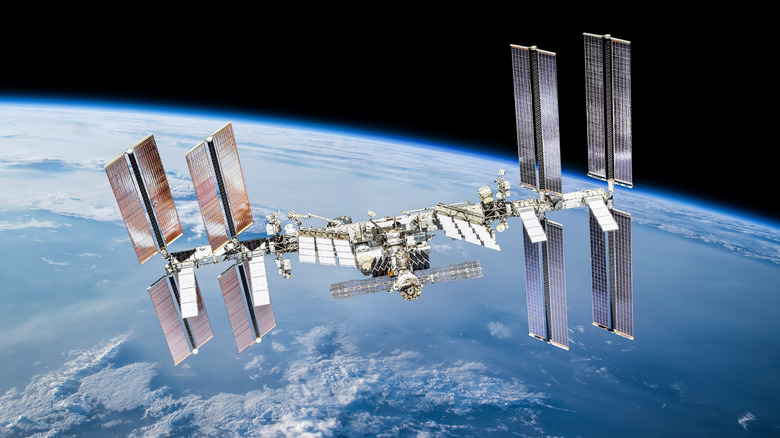This Awesome Raspberry Pi Project Can Track The International Space Station
Raspberry Pi's creators at the University of Cambridge marked the 10 year anniversary of their revolutionary concept in 2022. The institute reported that in a decade, over 40 million Raspberry Pis had been sold around the world. One key to its success, of course, is that it's so easy to modify and adapt to users' needs. Numerous projects around the world have only happened thanks to this versatile hardware.
Some are on the distinctly zany side, such as There's Waldo (the enterprising robot that uses AI to locate the iconic individual), but Raspberry Pi has also been used in rather more intellectual capacities. Finding Waldo is one thing, but how about finding the International Space Station?
Space enthusiasts will be intrigued to hear that, in another slice of Raspberry Pi brilliance, the system can do that too. Here's an introduction to the International Space Station Tracker project, how it was created, and what it can do.
What is the International Space Station Tracker?
Around the web, there are various tools that allow users to track the International Space Station's orbit. The European Space Agency, for instance, shows the station's approximate location, as well as where it was 90 minutes back and where it will be an hour and a half in the future. An enterprising Raspberry Pi user, however, has been able to emulate the effect of this high-tech software using a humble ePaper display and some Python coding.
As detailed on Hackster.io, Sridhar Rajagopal created the project to display the location of the ISS using Waveshare ePaper. Rajagopal found a map of the world that could be legibly reduced to the correct resolution to display fully on the tiny "screen" (264x176 and 2.7 inches respectively).
The creator explains that the tiny map with continents displayed in stark black includes longitude and latitude lines, and a contrasting red line clearly displays the course the ISS is taking. Its location is updated on the project twice a minute. The result is an intriguing tool in miniature, with an accurate and near-real-time display.
How was the International Space Station Tracker created?
To create the tool, Rajagopal combined Raspberry Pi 3 Model B+ with its ProtoStax Enclosure. Armed with these components, with SPI configured on Raspberry Pi, and with the required file from GitHub, Python 3 and above is needed to run the tracker successfully.
As with a lot of Raspberry Pi projects, there are further refinements that can be made to increase the International Space Station Tracker's capabilities further. The creator suggests, for instance, that users could modify it to alert them when the ISS is orbiting above their specific location.
NASA's Spot The Station website allows users to input their town (or the details of one nearby them), and then see a marked map of potential places to sight the ISS nearby. While a hobby project such as the International Space Station Tracker isn't quite capable of that, it's a fantastic example of the kind of creativity and collaborative spirit that is the greatest strength of the Raspberry Pi community.


